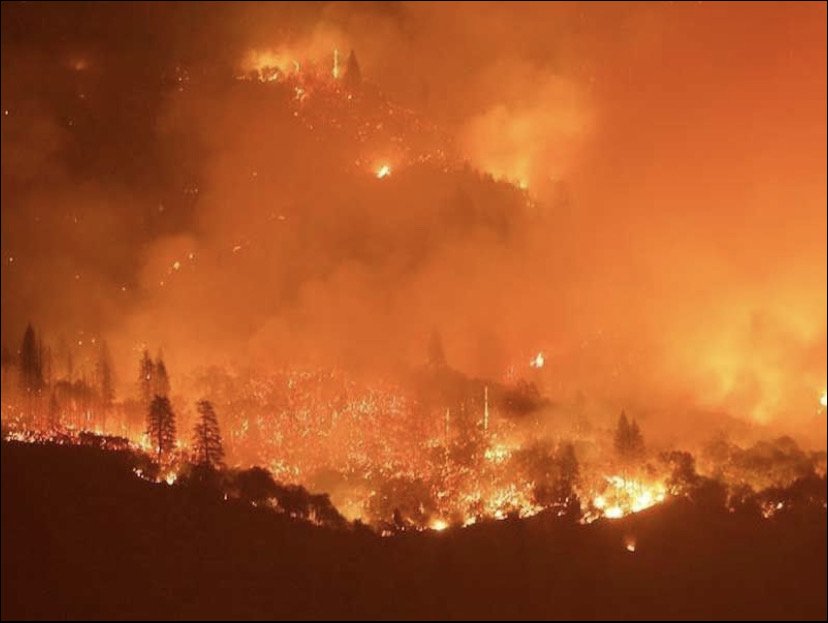The Ghost Captain
Delta Conservation Camp-
Suisun City, 1996
To be alive at all is to have scars
-John Steinbeck
If the highest aim of a captain were to preserve his ship, he would
Keep it in port forever.
-Thomas Aquinas
A ship is always safe at shore, but that is not what it is built for
-Albert Einstein
For the helmsman is recognized in the tempest.
-Cyprian
Anyone can hold the helm when the sea is calm.
-Publilius Syrus
If you want to build a ship, don’t drum up the men to gather wood, divide the work,
And give orders. Instead, teach them to yearn for the vast and endless sea.
-Antoine de Saint-Exupéry
He was the fourth captain on Crew Three in the time that I was there. He had come to Delta from a CDF station near Salinas. Before that he had run convict crews in the southern camp system for many years. He was a slight man, about five and a half feet tall, with grey blonde hair, a mustache, and red earth colored skin, a weathered face that was a many-lined arroyo. His eyes were set deep into their sockets in sepulchral dignity appearing to retreat from what they saw. Though they were frequently covered by his squinting expression, when at rest he had a thousand yard stare that scanned over scarred surfaces and betrayed a deep past trauma. His work to veil this haunted look was to chain smoke. It was as if wraiths and his demons attached themselves to the exhalations of his cigarette smoke where they would rise, dissolving upwards, finally vanishing, but then would soon return to ride again on the perpetually produced smoke. I saw the captain’s mood lighten and transform only when he was on a fire line. This was his true element. To see his presence soften was disorienting. It was then that you could comprehend the weight of his PTSD and see how it had transfigured him. There was speculation on the crew regarding his story. Some said that he had once led a crew from Gabilan Camp out of Soledad on a large fire near Big Sur that had burned through heavy timber. When he and his crew were leaving the fire line through the black nighttime forest, an old growth tree or huge widow maker snag broke, falling down and killing several of his crew members and permanently injuring others. After this incident, it was said that he had transferred to a station house where he worked for several years where his traumas mutated and grew. He had petitioned to remain in the area of Salinas and had succeeded. Over many years he had built his career in the remote canyons of the Santa Lucia and Gabilan Mountain ranges. The rhythm of these places was tied to the sea with fog banks spilling through passes and over the tops of green and gold mountains, among their trees, in grey tendrils, Monterey Pines and cypresses, red barked madrone, deer and gray foxes vanishing among wild lilac and iris, lush green moss and Manzanita. The fog collecting itself over Monterey, the Carmel Highlands, and Point Lobos, following wind currents, over the dark Pacific and her kelp beds that lie beyond the twisted contortions of cliffs that have been formed for centuries. In quick passage of time the wind returns once more to the Salinas Valley where her live oaks, poppies, and grasses have earned their name- the pastures of heaven.
In the CDF stations most of the calls are for medical responses. He had told one of the crew members at Delta that he couldn’t bear to see another child ripped to shreds in a road accident and that he didn’t want to have to operate the jaws of life ever again. He told the convict that he wanted to be back on the fire lines to lead hand crews again until his time came to retire. Being in the wild lands fighting fires was what he loved. There is something of great value to see a person doing what they were born to do, and to see that there is a place on earth where this can occur. On wildfires the captain was at home, and he found the forgetting that allowed him to live as a human who is realizing his potentials. There was no mistaking that he had found the joy of living in spite of the cost of loss. He led us decisively against the fires with élan and a confidence that came from his experience. He was an artist at reading fire behavior and how to apply a hand crew in coordination with the dynamics changing between land and the retreat and advance of flames. I did not doubt him as I did other captains. I knew somehow that he had weighed the risk of the fire against reason and his instinct, and was at constant war with failure. More than any of the other crew leaders he tried to impart what he knew and what the possibility of this knowledge had to offer. He did not gamble with our lives like others had.


